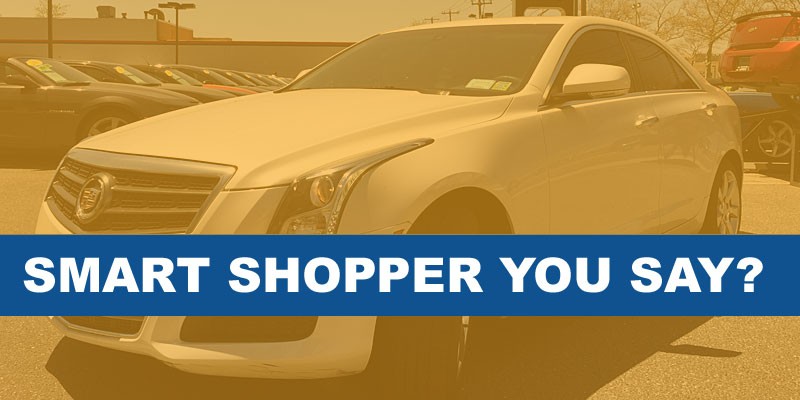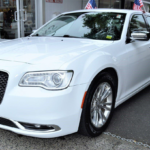When it comes to purchasing a used vehicle, there are many things to know and be aware of. From price, to condition, to the person or dealership selling the vehicle, there are a whole lot of factors to consider. Whether you’re a first time used car buyer, or a veteran of the used car lots, here are some good tips and helpful information to know before you go looking for your next ride.
Know Your Price Range and Stick To It:
The first thing you want to do when considering buying a used vehicle is figure out how much money you have to spend on the vehicle, both upfront and later on when it comes to car payments and insurance.
Remember too to consider that even if the car that you’re buying is under your price range, additional costs like tax, title, registration and insurance can bring the price up fast. If you’re looking at a vehicle that is a high performance vehicle with terms like, “Turbocharged” and “Sports Car“ associated with it, be aware that there is a higher probability of your car insurance being more pricey than that of a vehicle that isn’t associated with those terms.
As a general rule, your car payment should always be less than 20% of your take-home pay.
Also, when purchasing a vehicle, use a credit card or check. That way there is a paper trail attached to the purchase and you can feel assured that there will be no issues with your transaction or in the case of needing to get your money back.
Don’t Settle: Look Around and Do Your Own Research:
When looking for a used vehicle there are many different places to go to look for one that isn’t necessarily from a big name dealership. Research smaller local independent car lots, and be sure to browse online. Places like Craigslist, CarGurus, Yahoo! Autos, Ebay Classifieds Oodle, and others have wide selections of vehicles from a diverse array of sellers.
While browsing through different vehicles, keep in mind that a new car’s wholesale value dramatically drops after two years, usually about 45-55%!
Once you’ve found a used vehicle that you like, make sure you obtain the VIN number (vehicle identification number) to run a CARFAX and Autocheck report. These reports will let you know much more about a vehicle’s past than a seller may want to share with you themselves.
This may seem like common knowledge, but never, ever, purchase a vehicle before getting the chance to test drive it. The best way to know how your “new” potential car, truck, SUV or minivan will run is by taking it for a spin.
Before taking the plunge, definitely mull over the idea of having a mechanic you trust inspect the vehicle. Note: If the dealership or person you are buying the vehicle from takes issue with that, then perhaps that is not the place or person you should be buying a car from.
Warning Signs To Watch Out For:
While testing driving and inspecting the vehicle, look out for any/all of these:
- Strange noises emanating from the vehicle, like rattles, squeaks and clunks.
- Leaks.
- Take a look at tire pressure, tread and uneven wear.
- Peak under the hood.
- While driving be aware of any pulling. It could be an alignment, brake, tire or other issue.
- Drive around for at least fifteen minutes, and try to drive on different roads to check how the vehicle fares in different road conditions.
- Look for rust underneath and on the frame of the car.
- A new paint job on a used car could mean they are trying to cover something up – knock on areas that look repainted for a change in sound.
- Look at mileage and weigh that against the wear and tear on the vehicle.
- Make sure the radio, headlights, interior lights, windshield wipers, heat/air conditioning work while testing out the car.
- When test driving the vehicle be sure to drive in an area where you can reach a higher acceleration and then jam on the brakes to test those.
Don’t Be Afraid To Negotiate and Don’t Be Afraid To Say No:
While haggling is not everyone’s cup of tea, it is one thing that can really help or hurt when purchasing a used, or even new vehicle.
Make sure when you go into the dealership that you’re well versed in what kind of car(s) it is that you’re interested in and about how much the car(s) you desire is worth. Resources like Consumer Reports can tell you a lot about the reliability of certain models, and Kelley Blue Book’s Price Your Next Car can give you a good idea of how much a car is worth.
Walk into the dealership with a set-price in your mind. This set-price should be approximately fifteen percent below the asking price since many dealers’ asking prices are really twenty percent higher than the price they paid for the vehicle. Once you voice your offer, stand firm. Many salespeople like to try and make potential customers feel guilty about the “low” price they are asking for, but don’t fall for it. If the dealership really wants your business they will make sure they get it – even if it is for a smaller profit margin.
Don’t get too attached to any vehicle, and never be afraid to walk away.
Just as they say that there are plenty of other fish in the sea, the same goes for cars. There are plenty of other used vehicles on the market to choose from.
References:




